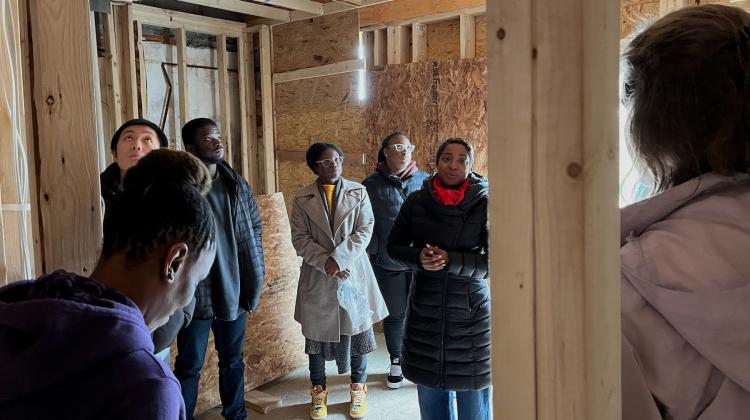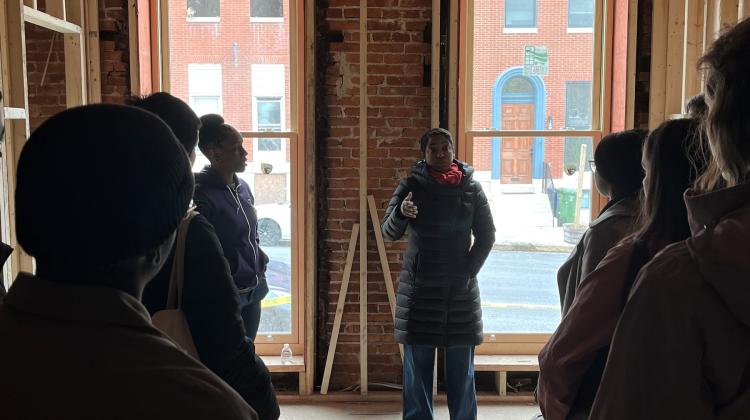Major economic and demographic changes in the city of Baltimore have contributed to a declining population. Baltimore’s Department of Housing and Community Development estimates that since 1950, Baltimore has lost over 350,000 residents, with most of these individuals moving to surrounding counties. Prior to 1950, Baltimore City accounted for 40% of Maryland’s total population, now it represents just 10% of the total population. The decrease in demand for housing within the city itself led to disinvestment, abandonment, and a surge in the number of vacant housing units. In early 2022, there were 14,989 vacant properties in the city and only a small percentage - 1,245 units - are owned by the City government.
A joint course, taught in collaboration between Morgan State University (MSU) and Massachusetts Institute of Technology (MIT), seeks to explore how design, policy, and architecture could be mobilized to address the challenges of vacant housing and help the city of Baltimore “make good” on its aspirations of being a more just and thriving city. The course is co-taught by MSU’s Brent Sturlaugson and MIT's Holly Harriel and Katrin Kaeufer. Throughout the spring of 2025 students from both MIT and MSU met to develop design proposals at the urban and architectural scale. The culmination of these efforts will be a neighborhood revitalization plan paired with an architectural design for an individual building within this plan. Together, these projects will simulate a development model rooted in principles of climate justice. “The challenges facing Baltimore have so many layers, more than can be meaningfully understood from a single perspective. With this interdisciplinary team of students and faculty, we’re learning a lot about how the design professions might work with communities to overcome the issues that surround widespread vacancy,” says Sturlaugson.
Sturlaugson is Assistant Professor and BEAR Lab Director at MSU’s School of Architecture (SAP) and Planning. His research contributes to a more critical understanding of sustainability in architecture by explaining how design mobilizes a cascade of social and environmental effects, including how modular, prefabricated design could be employed to help address required updates to make vacant housing units liveable. Harriel is an Associate Professor of the Practice of Democracy and Civic Engagement and the executive director of MIT CoLab. Kaeufer is Lecturer and a Program Director at MIT’s Department of Urban Studies and Planning. Her research focuses on leadership, organizational change, values-based banking as well as on participatory action research.
The spring 2025 course is supported through a broader initiative between MIT’s Department of Urban Studies and Planning (DUSP) and MSU’s SAP which seeks to build partnerships in research and teaching between MIT and Historically Black Colleges and Universities (HBCUs).




